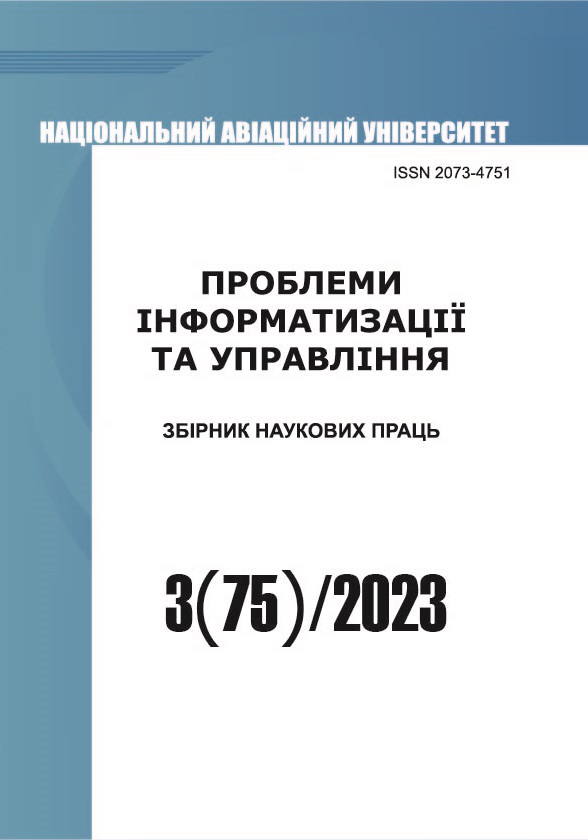Optimization method for mass service system with the use of a virtual assistant based on artificial intelligence
DOI:
https://doi.org/10.18372/2073-4751.75.18013Keywords:
Mass Service System, GAS, Virtual Assistant, Artificial Assistant, Telegram BotAbstract
In article, we present the development of an optimization method for mass service systems using a virtual assistant based on artificial intelligence as an effective tool for automating and enhancing user service processes. The proposed solution enhances user interaction, utilizes artificial intelligence to improve responses, efficiently stores and analyzes data, and enables automation through a GAS. Future plans include expanding the language model, improving the user interface, adding automatic language recognition to support multiple languages, and introducing additional query analysis capabilities. We aim to develop algorithms that learn from user responses to provide personalized answers and enhance the user interaction experience. Furthermore, we investigate and optimize data processing algorithms to ensure the system's efficient operation in high query volume scenarios. These research developments have the potential to enhance the efficiency, accuracy, and user experience of mass service systems utilizing a virtual assistant.
References
Kleinrock, L. Queueing Systems, Volume I – Theory. Wiley, 1976. 417 p.
Gelenbe E., Mitrani I. Analysis and Synthesis of Computer Systems. New York : Academic Press, 1980. 239 p.
Ananthanarayanan, G., et al. CloudScale: Elastic Resource Allocation for Cloud Computing Environments. ACM, 2010.
Zhang H., Hou J.C. Queue Length Estimation and Call Admission Control in Differentiated Services Networks. IEEE/ACM Transactions on Networking. 2005. Vol. 13. Iss. 2. P. 400–413.
Li W., Li Y. Learning Automata-based QoS-aware Web Service Selection. IEEE Transactions on Services Computing. 2009. Vol. 2. Iss. 1. P. 48–61.
Shead S. Why everyone is talking about the A.I. text generator released by an Elon Musk-backed lab. URL: https://ramaonhealthcare.com/why-everyone-is-talking-about-the-a-i-text-generator-released-by-an-elon-musk-backed-lab/.
Bussler F. Will GPT-3 Kill Coding? Towards Data Science. URL: https://towardsdatascience. com/will-gpt-3-kill-coding-630e4518c04d.
Brown T.B. et al. Language Models are Few-Shot Learners. URL: https://arxiv.org/abs/2005.14165
Sagar R. OpenAI Releases GPT-3, The Largest Model So Far. URL: https://analyticsindiamag.com/open-ai-gpt-3-language-model/.
Chalmers D. GPT-3 and General Intelligence. У Weinberg, Justin. Daily Nous. Philosophers On GPT-3 (updated with replies by GPT-3). URL: https://dailynous.com/2020/07/30/philosophers-gpt-3/.
Гнатюк В.О., Бондаренко І.О., Каплун І.С. Використання систем обміну миттєвими повідомленнями для автоматизації надання консультативних послуг. Реєстрація, зберігання і обробка даних. 2021. Т. 23. № 4. С. 58–67.
Гнатюк В.О., Батрак О.Г., Яроцький С.В. Автоматизована система реєстрації місцезнаходження працівника. Проблеми інформатизації та управління. 2023. В. 74. № 2. С. 14–20.
Downloads
Published
Issue
Section
License
Автори, які публікуються у цьому журналі, погоджуються з наступними умовами:- Автори залишають за собою право на авторство своєї роботи та передають журналу право першої публікації цієї роботи на умовах ліцензії Creative Commons Attribution License, котра дозволяє іншим особам вільно розповсюджувати опубліковану роботу з обов'язковим посиланням на авторів оригінальної роботи та першу публікацію роботи у цьому журналі.
- Автори мають право укладати самостійні додаткові угоди щодо неексклюзивного розповсюдження роботи у тому вигляді, в якому вона була опублікована цим журналом (наприклад, розміщувати роботу в електронному сховищі установи або публікувати у складі монографії), за умови збереження посилання на першу публікацію роботи у цьому журналі.
- Політика журналу дозволяє і заохочує розміщення авторами в мережі Інтернет (наприклад, у сховищах установ або на особистих веб-сайтах) рукопису роботи, як до подання цього рукопису до редакції, так і під час його редакційного опрацювання, оскільки це сприяє виникненню продуктивної наукової дискусії та позитивно позначається на оперативності та динаміці цитування опублікованої роботи (див. The Effect of Open Access).


